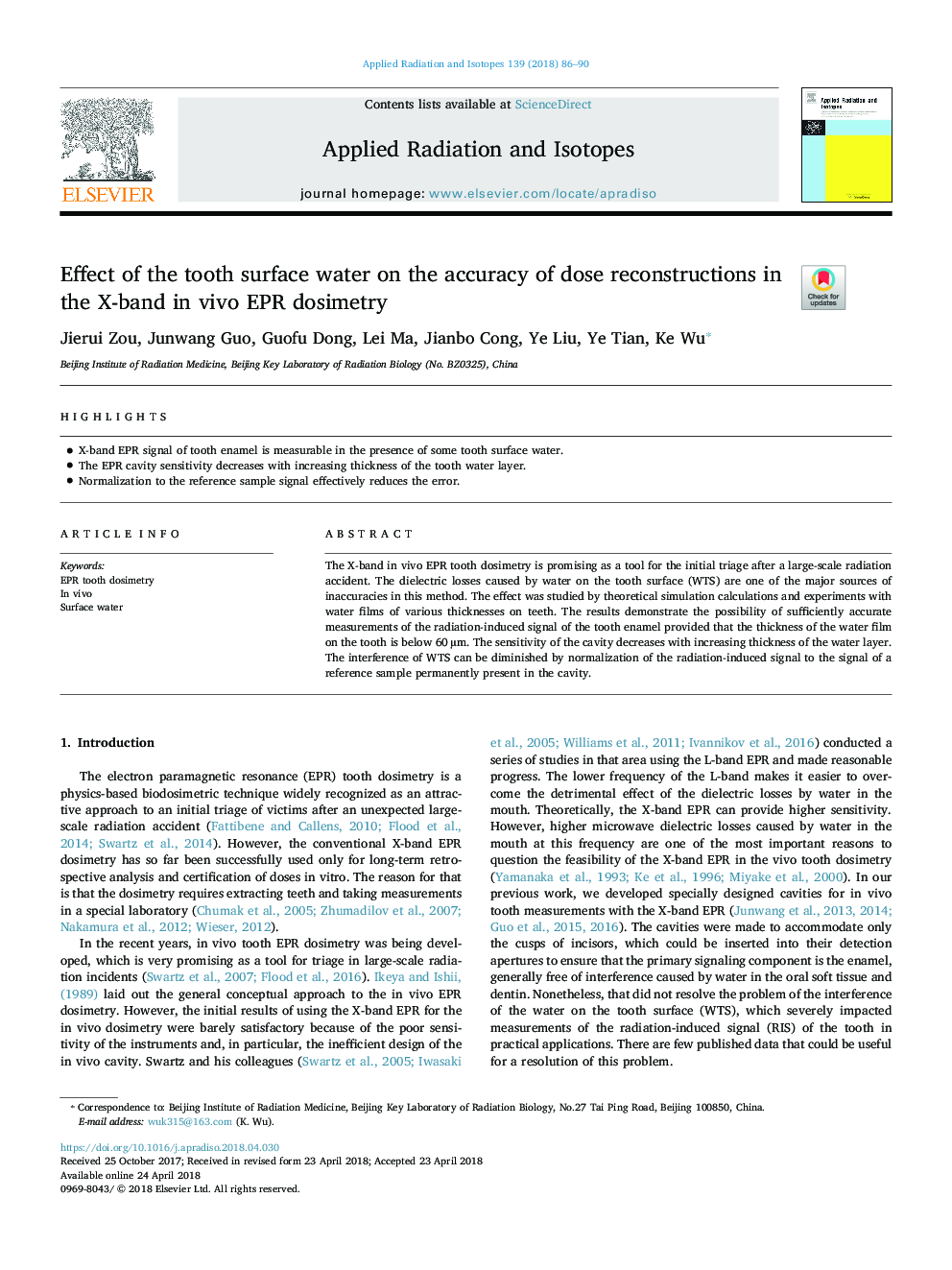| Article ID | Journal | Published Year | Pages | File Type |
|---|---|---|---|---|
| 8208494 | Applied Radiation and Isotopes | 2018 | 5 Pages |
Abstract
The X-band in vivo EPR tooth dosimetry is promising as a tool for the initial triage after a large-scale radiation accident. The dielectric losses caused by water on the tooth surface (WTS) are one of the major sources of inaccuracies in this method. The effect was studied by theoretical simulation calculations and experiments with water films of various thicknesses on teeth. The results demonstrate the possibility of sufficiently accurate measurements of the radiation-induced signal of the tooth enamel provided that the thickness of the water film on the tooth is below 60â¯Âµm. The sensitivity of the cavity decreases with increasing thickness of the water layer. The interference of WTS can be diminished by normalization of the radiation-induced signal to the signal of a reference sample permanently present in the cavity.
Keywords
Related Topics
Physical Sciences and Engineering
Physics and Astronomy
Radiation
Authors
Jierui Zou, Junwang Guo, Guofu Dong, Lei Ma, Jianbo Cong, Ye Liu, Ye Tian, Ke Wu,
